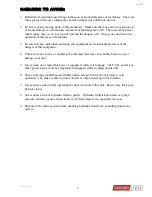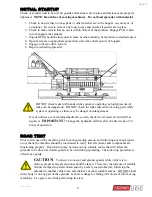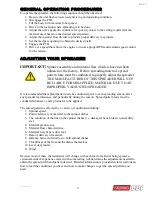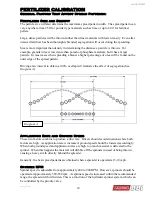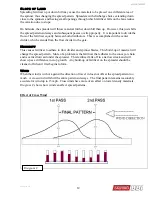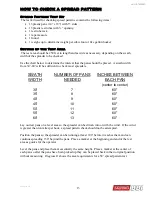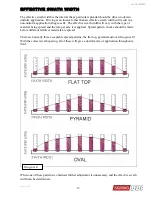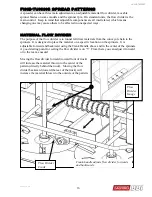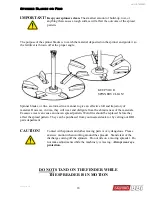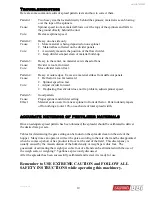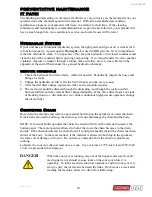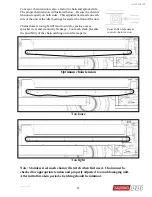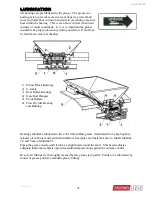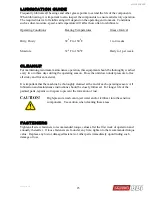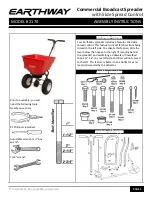
FT TRUCK MT
8
INITIAL STARTUP
Check over entire unit to be sure all guards and fasteners are in place and fasteners are properly
tightened
. NOTE: Stand clear of moving machinery. Do not load spreader with material.
1. Check to be sure that no loose parts or other material are in the hopper, on conveyor, or
on spinner. Be sure to remove any loose pieces and ensure all guards are in place.
2. Check to make certain that no one is within 50 feet of the spinners. Engage PTO, which
in turn engages the spinners.
3. Engine RPM should be increased to same as when running. Set spinners to desired speed.
4. Open feed gate to appropriate spread rate (reference chart on side of hopper).
5. Engage conveyor drive system.
6. Begin road testing spreader.
DO NOT check leaks with hands while system is operating, as high-pressure oil
leaks can be dangerous! DO NOT check for leaks adjacent to moving parts while
system is operating, as there may be danger of entanglement.
If your unit has a self-contained hydraulic system, check the oil reservoir and refill as
required.
IMPORTANT!
Change the hydraulic oil filter after the first week or 50
hours of operation.
ROAD TEST
Prior to first use of the machine, prior to each spreading season, and following any major repair
or overhaul, the machine should be road tested to verify that all systems and components are
functioning properly. Road testing may be done on any suitable course that will allow the
spreader to be driven at similar speeds to be used during spreading. The following procedure is
offered as a guide.
CAUTION!
To observe conveyor and spinner speeds while vehicle is in
motion, proper safety precautions should be taken. These may include use of suitable
mirrors clamped to permit observation by a safely seated observer, following the
spreader in another vehicle at a safe distance or other suitable means. DO NOT stand
in the body or on any part of the spreader, as there is danger of falling off vehicle or into moving
machinery. Use great care while performing this test.
BASICS







